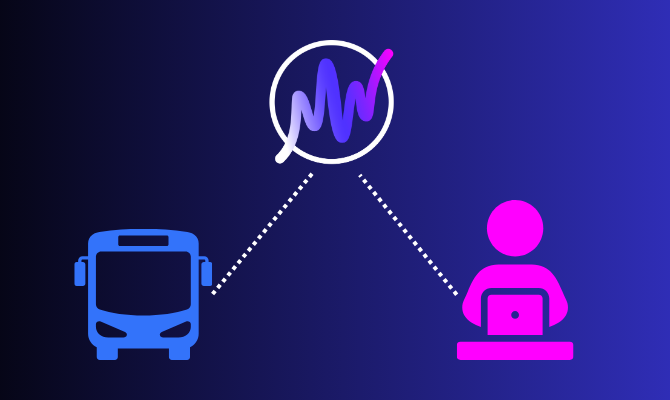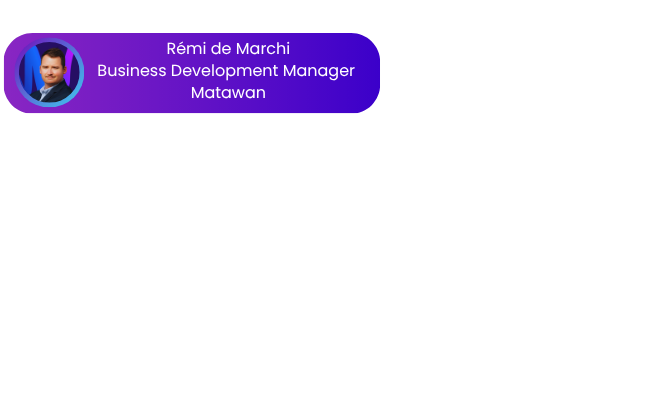
For too long, riders and transit agencies have been constrained by outdated fare collection systems. The frustration is familiar: fumbling for exact change, waiting in line to load a physical card, or the anxiety of a lost ticket. These systems are not just inconvenient for riders and agencies; they are costly, rigid, and operationally burdensome.
But a new era of fare collection has been here for many years now, and it’s powered by the cloud. The combination of Account-Based Ticketing (ABT) and the Software-as-a-Service (SaaS) model is no longer a futuristic concept—it is a proven, scalable, and essential solution for modernizing public transit.
This article will explore why SaaS ABT platforms like Matawan’s WanFare are poised to become the standard for fare collection worldwide, offering unprecedented benefits for both agencies and the communities they serve.
What is a SaaS ABT Platform?
To understand the revolution, you first need to understand the components.
Account-Based Ticketing (ABT) fundamentally shifts the fare collection paradigm. Instead of the value being stored on a physical token (like a paper ticket or a smart card), the value resides in a secure, digital account in the cloud. The physical media—whether it’s a contactless bank card, a mobile phone, or an agency-issued credential—becomes a simple identifier for the account. The system validates the rider’s identity, calculates the correct fare in the back office, and debits the account.
Software-as-a-Service (SaaS) is a delivery model for software where the provider hosts the application and makes it available to customers over the internet. Instead of purchasing, installing, and maintaining complex software on their own servers, transit agencies can access a ready-to-go system on a subscription basis. The provider handles all security, updates, and maintenance, ensuring the system is always running on the latest technology.
A SaaS ABT Platform combines these two powerful concepts. It’s a cloud-native, centralized system that manages rider accounts, processes fares, and provides real-time data, all delivered as a service. This model shifts the focus from managing hardware to delivering a seamless, data-rich service.
Why Are Agencies Making the Switch?
The growth of SaaS ABT like Matawan’s WanFare isn’t just a technological trend; it’s a direct response to the needs of a modernizing transit industry. Here’s why it’s gaining so much momentum.
=> A Superior Rider Experience
=> Unprecedented Benefits for Transit Agencies
Matawan: A Platform for All Agencies
Matawan has successfully implemented its ABT SaaS platform with hundreds of transit agencies, proving that a single, robust solution can scale to meet diverse needs. The platform has been adopted by a wide range of organizations, from the smallest agency operating with just two buses to the biggest regional ones managing more than 3,000 vehicles.
The strength of our SaaS platform lies in its flexibility to serve multiple sizes and types of agencies. Matawan’s solution has been deployed on a variety of systems, including buses, ferries, rail systems, and vans, showcasing its adaptability. Regardless of the size or mode of transport, the results are always consistent: enhanced cost efficiency, a measurable increase in ridership, and powerful data insights that inform strategic decisions.
In Drummondville, Canada, implementing an advanced fare management system led to 60% less manual processing overall and significant annual savings. Similarly, the transit network in La Rochelle, France, saw 45% of all its validations shift to open payment systems within a single year, demonstrating how a frictionless experience can drive both ridership and revenue.In cities like Ferrara and Bologna, Italy, the automation of complex processes like timetable creation has slashed planning time by up to 80%. In New-York, the Port Authority Trans-Hudson system, which serves New Jersey and New York City, aims to analyze ridership data accurately to optimize schedules and improve communication with passengers.
Leveraging validation data and video feeds allowed Matawan to project origin/destination matrices and share passenger loads on each train in just four weeks. These advances in data analysis can drive meaningful improvements in all agencies’ quality of service, such as by informing passengers of anticipated crowding or proactively launching additional vehicles.
The Future is Here: What’s Next?
The shift to SaaS ABT platforms marks a fundamental change in the industry. It moves us from a hardware-centric model, where the terminal holds the intelligence, to a service-oriented model, where the back office is the brain of the operation.
Looking ahead, we can expect to see these platforms become even more powerful. With the data they collect, they can leverage artificial intelligence and machine learning to predict demand, optimize service, and even offer more personalized and flexible fare options. The focus will continue to be on open, modular systems that prevent vendor lock-in and foster a spirit of continuous innovation.
In this new era, fare collection systems are no longer a static piece of infrastructure. They are a dynamic, data-rich service that makes public transit more accessible, more convenient, and ultimately, a more attractive and equitable choice for everyone. The future of fare collection is in the cloud, and it’s ready to ride.
